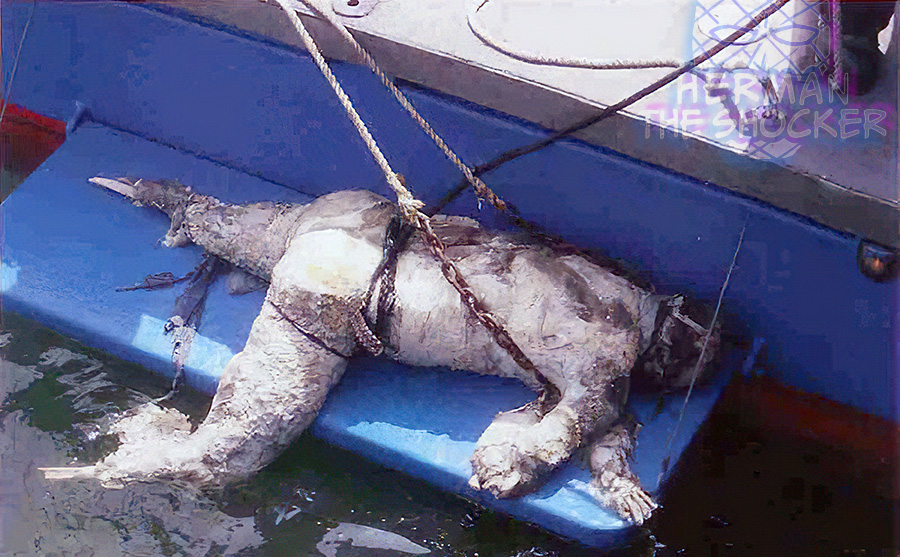This body was found floating in the Hudson River just to the west of Manhattan. The missing hands and feet are due to injuries from marine animals. No further info.
If a body is placed in water containing a large amount of bacteria, such as that from sewage effluent, decomposition is accelerated. A body in water generally decomposes more slowly because of colder temperatures and lack of oxygen. Because the body has a greater specific gravity than water, it sinks initially. Prolonged submersion in water causes a wrinkling effect around the skin of the hands and feet. The body orients itself in a head-down position that sometimes results in scraping of the forehead when it comes into contact with the rough sea floor. After a period of 3 to 4 days in warmer water and about a week in cold, the body will surface owing to the formation of gas. Sometimes the skin and tissues burst and the body sinks again to the bottom. The process may repeat itself and the body floats to the surface again.
The anaerobic nature of decomposition for wet or submerged remains may result in adipocere formation, a unique and fascinating process that results from incomplete transformation of lipids by bacteria. Insect and animal species feeding on the remains are different for submerged bodies. Postmortem predation may cause external defects that mimic injuries and should be interpreted with care. Forensic pathologists and medicolegal death investigators must be aware of the postmortem changes that may occur with submerged and immersed bodies.
Bodies that are found in the sea will often be decomposed and injured by the action of waves against obstructions or by marine predators, and blood may be washed out of the wounds. These changes may complicate the evaluation of cases. In deep waters such as ocean and sea, many small fish species feed on corpses.
Animal predation is very different in the water environment. In some cases, the body will be floating on the surface and the usual arthropod predators such as blowflies and carrion beetles will have access to exposed tissue. The immersed portion of the body will be subject to different predators. Aquatic insects may alter the appearance and condition of the remains.
Large animals such as turtles, large fish, and large crustaceans will cause tissue damage that in some cases may mimic trauma to the body. Smaller fishes, crabs, shrimp, and invertebrates prey on soft tissue and if given the opportunity can completely deflesh exposed parts of the body. Fish, turtles, and other animals may aggressively feed on remains and in the ocean environment, large carnivores such as sharks will create postmortem artifacts. It is not unusual for small fish and crustaceans to gain access to the interior of the body through skin and soft tissue defects or even normal body orifices.
Latest posts








